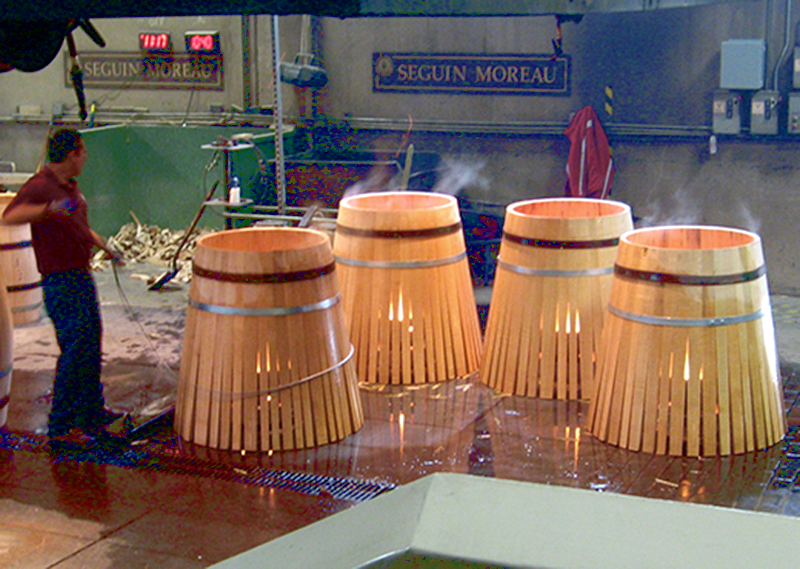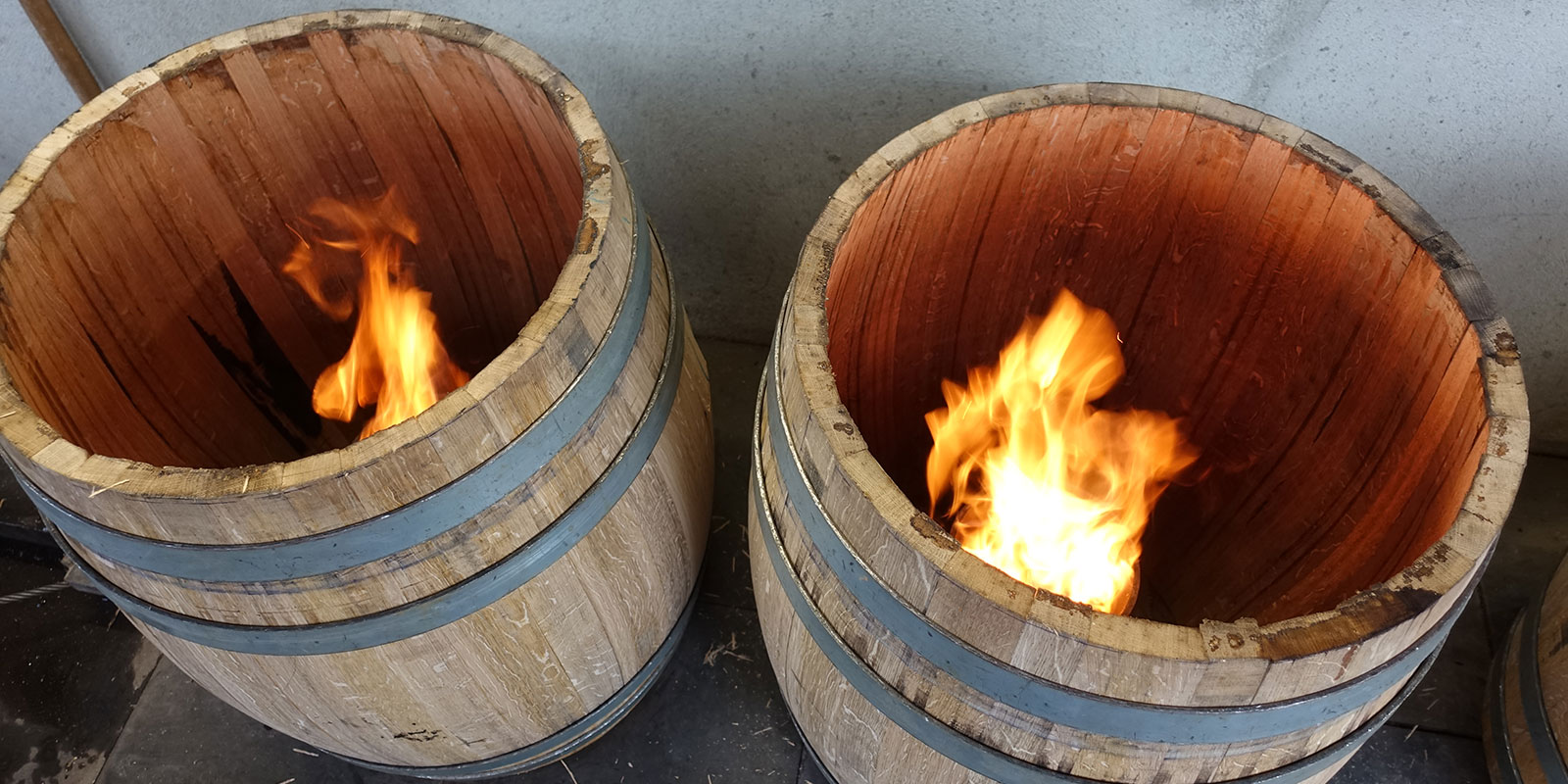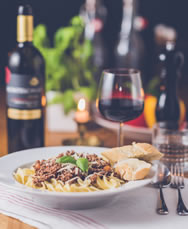HOW OAK INFLUENCES WINE
Oak in Winemaking
Working for a large retail wine/liquor chain, I deal with interesting customers every day. When people are searching for a chardonnay, I try to determine whether they like oaked or unoaked wine. What’s the difference between the two styles, you might ask? On the one hand, you can enjoy a classic Chablis that is crisp and lively with stone fruit, while on the other hand, oak will allow you to experience the round, creaminess of a Napa Valley Chardonnay. Simply put, oak is responsible for producing body, flavors, and aromas in chardonnay. When sipping a chardonnay, you might notice flavors of vanilla, pear, apple, melon, pineapple or even butter. That is oak doing its thing! The wine was aged in toasted barrels. 
There are several factors a winemaker considers when choosing barrels. First, he/she must choose the type of oak. A winemaker chooses oak based on the style and flavors that are desired in the wine. The most widely used barrels are French and American oak. French oak can be sourced from several different forests.
The main forests, located in eastern and central France, are Limousin, Alliers, Troncais, Nevers, and Vosges. The importance of choosing the right source lies in the fact that the oak grain varies dramatically between forests. French oak is a tighter grain, except for Limousin. The tighter grain produces a softer wine. French oak leans toward spice and soft vanilla flavors, while American oak produces strong vanilla and tropical flavors like coconut, pineapple, and banana. Much of American oak is grown in the upper and central Midwest, the Northeast and the Mid-Atlantic. Minnesota is a favorite source of oak because it’s located on the same latitude as some of the oak forests of France, which enables the winemaker to obtain similar elegant flavor profiles as the more expensive French barrels. After deciding on the source of wood, the next factor in barrel aging is the degree of toasting. The longer the toast, the more dramatic the change in flavors. 
The toasting can take anywhere from 45 to 90 minutes, depending on the level of toast that the winemaker has requested. The cooper can also utilize different temperatures during the toasting process to achieve a different flavor profile than just toasting at one set temperature. A light toast could bring out the flavor of vanilla, which would be a great choice in producing a lighter white wine, like Sauvignon Blanc. A medium toast would be a better choice for a fuller bodied white, resulting in a rich Chardonnay. This imparts a bolder, fuller mouthfeel. Heavy toasting, however, is rarely used in winemaking.
Please don't waste another $20-$30 drinking a disappointing wine, let me show you how!
The final factor to consider is the length of time in barrel. Since white wines are pressed from the skins before fermentation, they don’t require long aging. Again, it’s up to the winemaker to make that all-important decision of when to bottle! And finally, in many cases, the cost of the barrel can be a determining factor. French oak is roughly twice the cost of an American barrel. French barrels can cost upwards of $2,000 each, whereas American oak is generally under $1,000 per barrel.
Now that we’ve discussed oaked wines, let’s talk about unoaked. This style of wine is clean, crisp, vibrant, and will pair well with almost any food. Unoaked means that fermentation will take place in temperature-controlled steel tanks, without the influence of oak. Also, a secondary fermentation will not occur in unoaked chardonnay. This second fermentation, also referred to as malolactic fermentation (also known as MLF), will cause malic acid in the grapes (think tart Granny apples) to change to lactic acid (think cream). This results in a fuller, creamier mouthfeel. This buttery, creamy style, would not ordinarily be found in an unoaked wine. The winemaker would use MLF sparingly or stop it altogether.
I love a buttery Chardonnay, but it’s all about the balance too. If there’s more oak than the fruit can support, it can make a wine taste flabby, becoming one dimensional. It won’t be as enjoyable as a wine that has structure and balance. I look for a Chardonnay with delicious fruit, acidity, and great mouthfeel. In my opinion, that describes the perfect Chardonnay.
The next time you’re looking for a white wine with buttery notes and tropical fruit, you can feel confident in asking for an oaked Chardonnay!
Please don't forget to download and complete your taste profile! Help us to help you.

